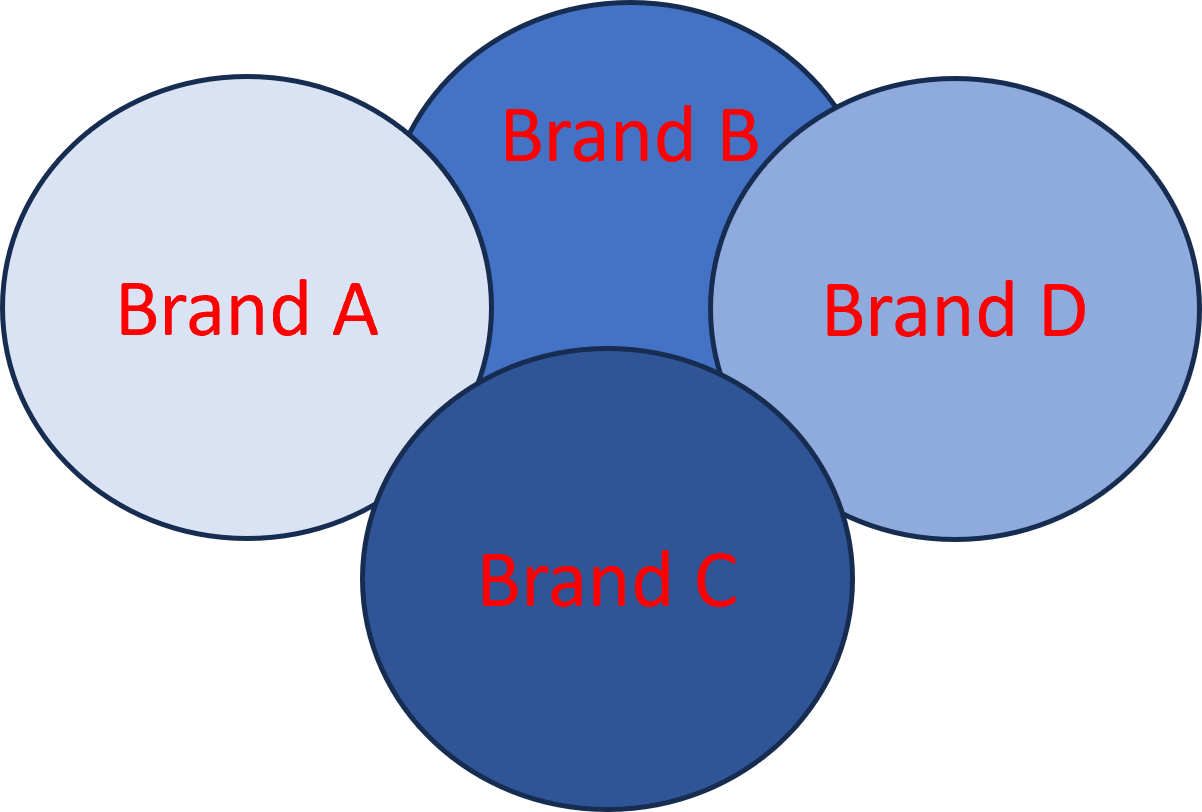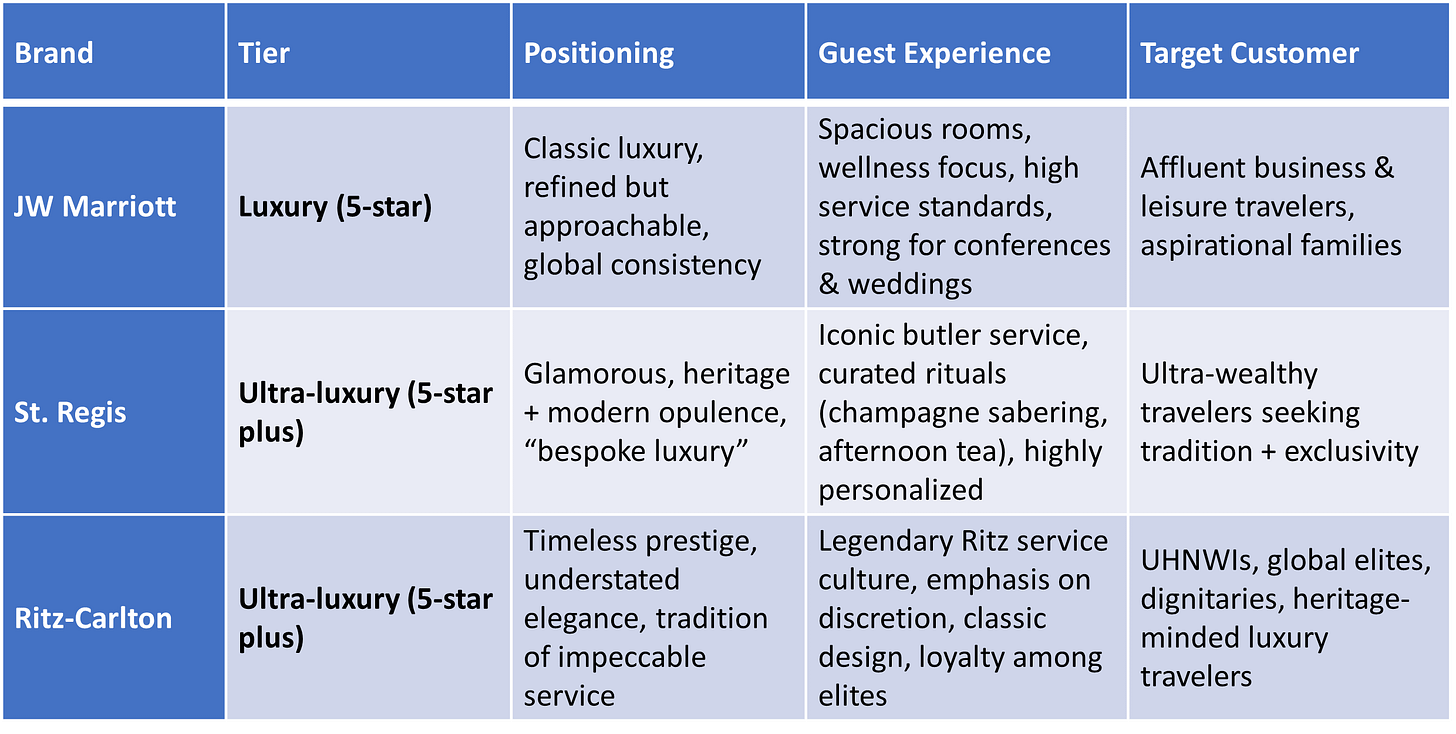What is common across HUL, Flipkart, Marriott, Hyundai, Volkswagen, L’Oréal, Aditya Birla Fashion & Retail, Pepsico?
All have multiple brands in the same product category targeting overlapping segments and a degree of cannibalization of sales within the brands! But why do companies adopt this and does this succeed?
There are many companies in FMCG/B2C space, who have multiple brands in the same product category which overlap each other in adjacent segments, thus competing with each other, while with competing other companies. Is it really possible for this approach to be successful? Why do companies adopt this strategy?
Some of the companies which have adopted this successfully:
HUL - Lux, Dove, Pears for beauty soaps and similar approach for other categories
L’Oréal Groupe- L'Oréal, Garnier for Haircare and Hair color
Flipkart - Flipkart, Myntra for Ecommerce in Apparel
Hyundai Group - Hyundai, Kia for SUVs
Volkswagen Group - Volkswagen, Skoda, Audi for Luxury passenger vehicles
Xiaomi - Redmi, Xiaomi, POCO for Mobile phones
Aditya Birla Fashion and Retail - Allen Solly, Peter England, Louis Phillippe in Apparel Retail
Pepsico foods- Lays, Doritos, Cheetos in chips/snacks
Marriott International - J W Marriott, Ritz Carlton, St Regis as Classic Luxury Brands, Courtyard by Marriott, Fairfield, Series (The Fern) being Midscale brands and similar approach for other categories in Hotels
Tata Consumer products - Tata Tea Premium, Tata Tea Gold in Tea
And more…
We will discuss a few of the above examples in some detail and then distill the learnings.
A. HUL soaps - Lux, Dove, and Pears are all beauty soap/skin cleansing brands owned by Hindustan Unilever (HUL)
1. Positioning Differences
Lux → Traditionally “the film star’s soap,” positioned as glamorous, affordable beauty soap for the Aspirational mass market, especially middle-income consumers. Priced at around Rs 60 to 65/-
Dove → Premium, dermatologically tested, positioned on moisturizing and care rather than glamour, Upper-middle class, urban consumers willing to pay more for skincare benefits. Prices at around Rs 70 to 85/
Pears → Gentle, transparent, heritage brand associated with mildness and purity. Niche consumers who value tradition, purity, and gentleness. Priced at around Rs 80 to 90/-
HUL deliberately allows overlap - If one consumer shifts preference (say from Lux to Dove as income rises), they stay within HUL’s portfolio. They compete with each other on the shelf, but the bigger idea is to crowd out competitors and capture different consumer needs, price points, and emotional territories.
B. Hyundai and Kia for SUVs
Hyundai and Kia are part of Hyundai Motor Group, but Hyundai has deliberately kept Kia as a separate company/brand
1. Brand Positioning Differences
Hyundai → Mainstream, practical, reliable, good value for money. Targeting Broader, conservative buyers (family-first, middle-class appeal)
Kia → Sportier, youthful, design-driven, slightly more adventurous image. Targeting - Younger, more style-conscious buyers who may want something “cooler.”
2. Competitive Shielding - If a customer rejects Hyundai for being “too common” or “too plain,” Hyundai Motor Group still has a chance to capture them through Kia. It’s the same logic as HUL: better to cannibalize yourself than let Toyota, Mahindra or Maruti or Tata take that share
3. The difference - Unlike HUL’s brands (Lux, Dove, Pears) which are under one company’s umbrella marketing, Hyundai and Kia operate as independent legal entities with separate dealerships, marketing strategies, and pricing freedom and the brand stories are different. But both share platforms, engines, and R&D!
Combined market share of Hyundai and Kia in passenger vehicles India is 20-21% (24% in SUV share) makes them clear No. 2 (in both overall PVs and SUV segment), far higher than the no.3 (13% in PV and 19% in SUV segment).
C. Flipkart and Myntra in Apparel
Slightly different pricing and discount strategies
But share common backend logistics
Have different loyalty programs - Flipkart Plus and Myntra Insider - but loyalty points can be earned on one can be redeemed on either!
D. JW Marriott, St. Regis and Ritz-Carlton are Luxury Hotels in Marriott portfolio
Do they compete?
Marriott carefully differentiates JW Marriott, St. Regis, and Ritz-Carlton to reduce cannibalization as we see in the table above. But there is overlap
Same city presence
In New York, Dubai, or Shanghai a wealthy traveler could choose between JW, St. Regis, or Ritz
For a high-spending corporate client/Wedding Event, JW, St Regis and Ritz might be substitutes
Aspirational shift - A frequent JW guest may “upgrade” to St. Regis or Ritz for special occasions (honeymoon, celebration).
Both lead to some level of internal competition, - But by design, the principle, better they “trade up/down” within Marriott than go to Four Seasons or a Hyatt
Unified Customer programs -
Common Loyalty program - Marriott Bonvoy - Earn on any Marriott brands and spend on any Marriott Brands
Common Booking engine across brands - Enables comparison by offering wide choices/rates/facilities within Marriott portfolio
The core objective
Capture the entire travel wallet of a customer across different occasions. - Same businessperson may stay at Courtyard during work trips, JW for family vacation, Ritz for honeymoon/anniversary.
Create a ladder of aspiration — Courtyard guests aspire to move up to JW or Ritz as income rises
Distilling the learnings from the above Examples - Horizontal Multi-Branding
The Core Idea - Large firms deliberately launch multiple brands within the same category (FMCG, cars, apparel, hotels, e-commerce). This creates potential internal competition, which at first glance looks wasteful (cannibalisation). But when managed well, it expands market share
Objectives
Maximize portfolio market share, block competitors, and capture micro-segments
Driving Economies of scale through shared resources:
Flipkart and Myntra share logistics, technology backbone, seller ecosystem
Hyundai and Kia share platforms, Engines, and R&D
HUL - Common distribution network, Media buying, display spaces
Marriott - Unified loyalty program, Common reservation engine
ABFRL- Shared sourcing and textile supply chains
2. Cannibalization within brands is by design, Managed via differentiation
Segment Coverage - Brands straddle across segments to cover entire market - Differentiation of brands could be price, features, emotional positioning, or persona
Overlap ensures coverage of adjacent segments seamlessly and thus capturing higher overall market share and prevent competitors from gaining share
Encourages Brand Switching within the Portfolio
Consumers may start at an entry brand and trade up within the portfolio. Cannibalisation thus also becomes a growth ladder
Customers movement up or down within the group/company, ensures high lifetime customer value for the company
Scale Matters - Large players can absorb and manage some level of internal cannibalization, better than smaller players
3. Customer Micro-Segmentation is the real enabler - Deep understanding of consumer needs, willingness to pay, lifestyle, psychographics etc. allows portfolio brands to coexist without destructive competition
Bottom Line
Companies like HUL, Hyundai–Kia, Marriott, Flipkart–Myntra, and others succeed with horizontal multi-brand strategies because they:
Use controlled cannibalisation to occupy every consumer segment
Create internal fences (price, benefit, lifestyle, channel) that minimise brand confusion
Cannibalisation here is not a weakness — it is a defensive moat and a growth engine
On a parting note: If the Brands are not managed carefully, one could end up “cannibalising (In the literate sense) each other” - In the early 1990s, Voltas attempted the same approach for its Refrigerator Business. It was selling refrigerators under Voltas brand name from 1984. In 1992, it acquired Hyderabad Allwyn, to leverage the strong "Allwyn" brand in Southern India and thus grow. Both Voltas and Allwyn operated as as independent profit centers with own manufacturing, dealers, marketing, brands (Similar to Hyundai-Kia). But both started competing against each other rather than with Godrej, Kelvinator, BPL, Videocon, LG. Both divisions would poach each other’s personnel, dealers, undercut each other in price, credit policies, incentives, display etc. This led Voltas’s Refrigerator business into deep losses with negligible market share gain. In 1998, Voltas sold its refrigerator business to Electrolux and exited selling refrigerators completely. (Voltas has relaunched refrigerators under Voltas Beko brand in 2019 under a new JV).
Thank you for reading The Chai and Charts Chronicles. To read any of our earlier 80 posts, you can click https://chaiandcharts.substack.com/archive. You can share your feedback on the comments section of the post or by email - menghrajani1@gmail.com






